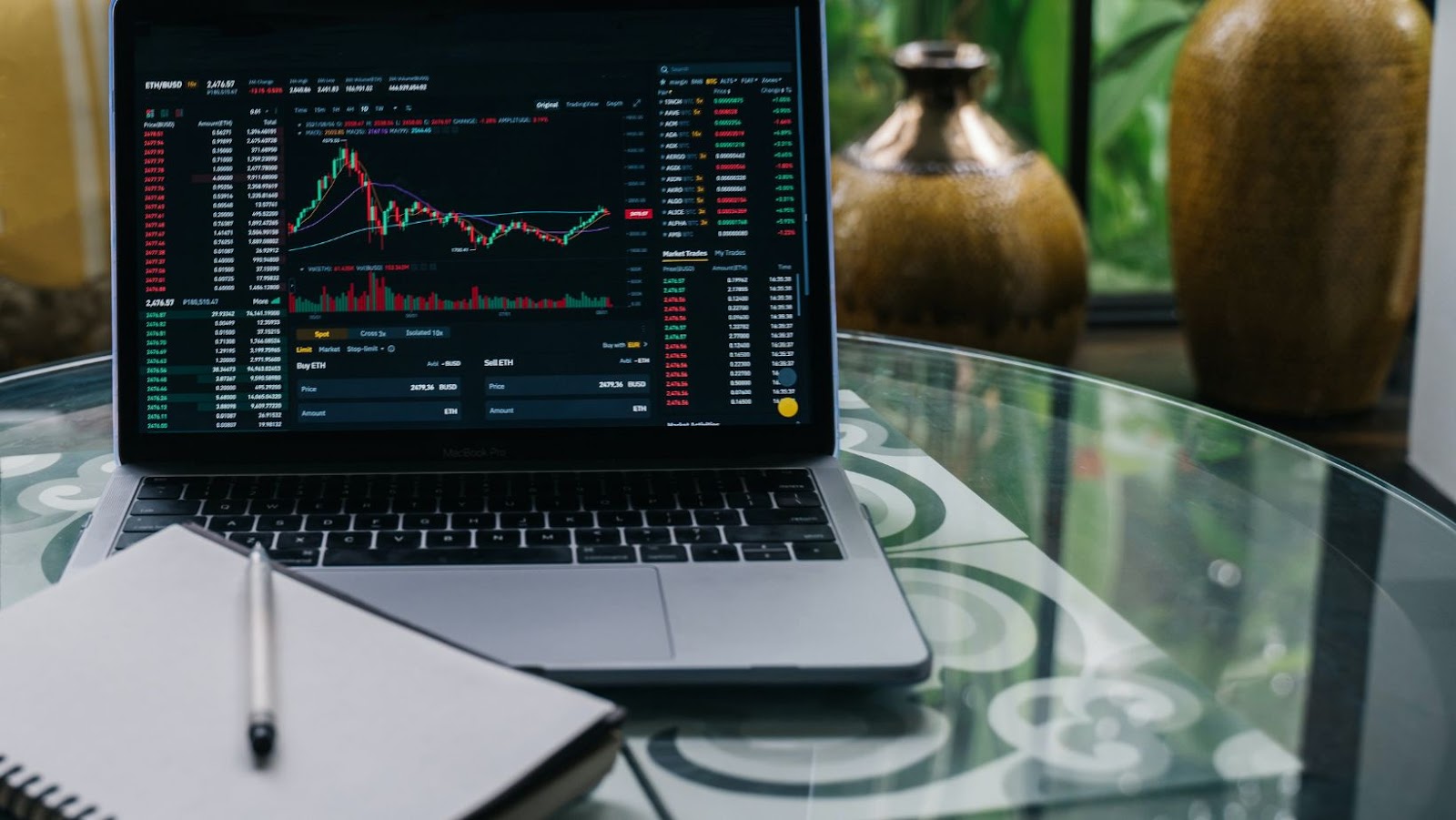
The stock market is an important cornerstone of a nation’s financial system because it provides investors with a means to diversify their investments. A stock market consists of three different types: the primary market, secondary market and over-the-counter (OTC) market. Although all three markets operate under the same principles, there are key differences between them.
Primary markets are where newly issued securities – such as stocks, bonds and options – are traded for the first time via an initial public offering (IPO). Companies use primary markets when they want to raise capital by selling their own securities directly to the public.
Secondary markets are made up of existing securities that have been bought and sold by different investors. The most popular example of a secondary market is the New York Stock Exchange (NYSE). Here, investors from around the world regularly buy and sell stocks listed on the exchange in real-time at a price determined by demand for each share at any given time.
The OTC Market primarily serves smaller companies that do not meet the requirements for listing their securities on a larger stock exchange. In this arena, buying and selling takes place through phone calls between brokers instead of through auctions as it does on regular exchanges like NYSE or NASDAQ. Generally speaking, prices of OTC stocks can be easily manipulated because there aren’t enough buyers or sellers out there. This may limit your chances with higher returns compared to those available in other markets or in specific stocks listed on bigger exchanges such as NYSE or NASDAQ.
Stock Market Index
The stock market index, or index, is used to measure the overall performance of a particular section of the stock market. An index is comprised of a basket of stocks that represent a sample of the broader market. Some popular indexes include the S&P 500, NASDAQ Composite, Dow Jones Industrial Average and Russell 2000.
A stock market index tracks the performance of an aggregate group of stocks over time by tracking price changes and dividend payments. The prices in an index are usually calculated with Mathematical formulas that take into account aspects such as price movements in individual securities to create an average. The mathematical formula used to calculate an index can also be complex or simple depending on which type of weighting scheme it is using (price-weighted, float-adjusted market capitalisation weighted, or value-weighted).
One way in which investors use the stock market index is to compare the current price against its historical trend line known as trend analysis. Comparing etch stocks individually against their peer group allows investors to identify when they may be overvalued or undervalued relative to industry peers and make buying/selling decisions based on these observations. There are many tools available today that allow investors access to track both individual stocks and larger indexes by enabling them to watch for changes quickly and easily so they can react accordingly. It has been suggested that one reason for the relentless rise in stock markets since their lows early this century may have been due to their ability receive information quickly from indexes such as S&P 500, NASDAQ Composite etc., allowing investors more time and financial freedom for informed decision making investing decisions in a safe manner before prices go too high or too low.
How the Stock Market Works
The stock market is a complex and ever-changing mechanism that can be difficult to comprehend. Understanding how the stock market works can help you make informed investment decisions, however small or large.
In this article, we will explain how the stock market works and how its relentless rise saved many investors from financial ruin.
Trading in the Stock Market
Trading in the stock market is fairly straightforward. Investors buy stocks to increase their assets, then hold on to them for longer or shorter periods of time depending on how they think the stock price will move. When investors feel that the price of a certain stock is going to go up they will buy it, and if they think it will go down they will sell it. Therefore, the rising and falling prices of stocks are mostly determined by investor optimism or pessimism at any given moment in time.
It is important to note that unlike other markets, such as the bond market or commodity markets, which are regulated by governments and central banks, no single entity oversees or controls the stock market. This makes it especially important for individual investors to be aware of both short-term and long-term trends in order to have success trading stocks.
The constant buying and selling activities on the major exchanges means that even slight changes in sentiment can have a large impact on stock prices. This so-called “trading effect” has been seen during times when financial news reports positively about certain companies’ performances or when economic data come out better than expected – resulting in their share prices increasing significantly over short periods of time. Conversely, negative news – such as trade wars between countries – can cause worry among investors that leads them to sell off their stocks; thereby leading to a decline in share prices across affected companies’ portfolios.
Skilled investors who have spent the time understanding how these markets work endeavor to look for underlying opportunities even during times of uncertainty in order to make prudent investments that yield more returns than what is seen from holding cash resources alone over extended periods of time i.e.,saving money though investing wisely.
Stock Market Cycles
Stock markets are known to go through cyclical swings due to a variety of factors including economic cycles, political and social upheaval, investor sentiment and more. These cycles can carry stocks up or down, and the volatility creates both opportunity and risk.
Stock market cycles are divided into three phases: bull (i.e., rising) markets, bear (i.e., falling) markets, and correction (i.e., flat) phases that can be either short term or long term. The U.S. stock market is considered to have entered a bull cycle in March of 2009 after hitting a low of 6,547 on the Dow Jones industrial average (DJIA). This bull cycle has lasted more than eleven years as of 2020 with several corrections along the way including in May 2010, August 2011, October 2014-January 2016, February 2018-December 2018 and most recently in March 2020 due to the COVID-19 pandemic’s disruption to global economic activity shattering investor confidence across the world.
Within each phase of these phases are corrections that provide traders with opportunities to buy stocks at lower prices regardless of the larger trend. For example when stock prices suddenly plunge during a ‘correction’ phase those able to take advantage by buying low will benefit from future rebounds once this temporary dip in stock prices subsides with equity values rising back up as before after some time has passed ensuring investors don’t incur any lasting financial losses due to their held investments resilience over time within this unrelenting rise as long periods of growth appear dominant compared with any sharp declines investors have faced throughout these cycles past or present regardless if short or longterm in nature overall allowing those invested advantages unseen by nonparticipants over time regardless even if only marginally outperformed under normal circumstances within this preferred environment seen multiple times already since its less volatile resurgence nearly 11 years ago in accordance within reliable financial standards provided accumulating trust for prospective traders alike helping relate valuations seen on paper towards actual tangible assets formerly tangible assets acquired determined prior my overarching explanation concluding how stock markets relentless rise saved many as reminders widely accepted utilized we must respect ourselves moving forward then ahead so we can save others too whenever necessary promoting understanding like our teachers would’ve taught us all but did times which at might seem unsolvable ciao!
Stock Market Regulations
Stock market regulations help maintain fair and orderly markets. Governments, both local and international, have established specific rules for stock exchanges in their currencies’ countries of origin. The purpose of such regulations is to protect investors from scams and other unscrupulous practices. These usually require stock brokers to abide by a certain set of protocols before they can begin trading on the market.
At a national level, the Securities and Exchange Commission (SEC) regulates the United States securities markets while foreign countries may have their own government body or governing organization that oversees their respective stock markets’ activities. At an international level, the International Organization of Securities Commissions (IOSCO) works to bring together securities regulators from all over the world to develop common standards of regulation and enforcement across jurisdictions.
The SEC also requires public companies in the US to make periodic reports about their business operations, financial investments, corporate events, share performance, management background information, and more. As part of this reporting requirement known as Regulation Fair Disclosure (Reg FD), companies provide access to any material nonpublic information relevant to their industries or performance as they become available so individual investors can make informed decisions when trading in stocks on public markets in the US.
In addition to national-level regulations governing investment processes and brokerage firms’ activities within domestic markets, other agreements have been established through either bilateral or multilateral agreements with foreign counterparts which serve to provide additional consultation services regarding cross-border trade issues between market participants involved in transactions spread across different countries’ stock exchanges for effective capital flow coordination and dispute resolution arrangements and enhance investor confidence when trading overseas equities using non-domestic vehicles like ADRs or Depository Receipts (DRs). As international financial activity continues to grow significantly every year in the globalized economy today, it is important that traders be able to provide adequate disclosures according to each country’s particular regulations in order for their transactions not to become unlawful or involved in unexpected outcomes due lagging legal compliance forces easing or annulling offered trades not considered for appropriation under cross-border investment agreements.
Stock Market Performance
The stock market’s relentless rise in recent years has been an incredible boon for investors. It has enabled investors to make more money than ever before and has helped many to achieve their financial goals.
But how does the stock market work and what factors influence its performance? In this article, we’ll explore how the stock market works and how its performance has been so relentlessly positive in recent years.
Factors that Affect Stock Market Performance
The stock market can be a volatile place, and understanding the factors that affect its fluctuations is key to mitigating risk and ensuring long-term growth. The stock market’s movements are driven by a range of economic, political, and psychological factors.
Economic Factors: Economics affects stock prices in both a macro and micro sense. When the macro economic climate is positive for stocks – that is, when inflation and interest rates are low and unemployment rates are low – investors tend to be bullish about stocks. On the other hand, if there’s an economic recession or the government takes action to cut spending or raise taxes, investors may get nervous about their investments and pull out of the market.
Political Factors: The political environment can also move markets up or down depending on its policies – changes in tax laws or regulatory policies can create changes in data that indicate how well companies may perform in a given condition. On the other hand, political uncertainty caused by civil unrest, war or international conflicts can have a negative impact on investor psychology due to heightened uncertainties over stability of governments or countries where they invest heavily into.
Psychological Factors: Investor psychology plays an important role in determining how attractive certain stocks will look during any given period. If many investors expect good returns from stocks they buy then they may influence demand which causes prices to increase due to supply-demand imbalance resulting in inflationary pressures on stock prices as well as bull markets whereby prices rise relentlessly till bubble bursts leading to bear markets characterised by retraction of share values caused by fear-driven selling pressures between bargain hunters seeking valuations lower than intrinsic value of businesses which came about due to irrational exuberance amongst many buyers prior bull run peak periods hastening implosion of equity indexes often seen subsequent roaring revival from bear bottoms bottom formations leading back into bullish waves eventually culminating into new highs hitting successive bull peaks subsequently triggering revulsion amongst fear enthused sellers causing recurrent bear cycles typically noticed every decade viz 80s tech & dot com 90s Asian financial crisis 2000’s US subprime housing crash joined recent cryptocurrency mania marking latest parabolic rise from 2017 onwards indicative upcoming bust typically followed bull roaring cycles ensue after initial bout gloom merchants become gooey rodents allowing Bargain Hunters sting again signifying similar cyclical adherence displayed hitherto witnessed across annals investing past eternal march forward manifesting all time record highs prepared nature’s course assured courtesy manias peaks & trough troughs boom bust epochal tribute celebrating relentless rise saviors saviors soundly restrained misers soft silent just patient hands wily pros dark art carefully crafting infinity timeless game evergreen bazaar forever.
Analyzing Stock Market Trends
By analyzing stock market trends, investors can gain insight into larger economic conditions. As the stock market continues to rise, it not only benefits current investors, but also serves as a sign of a growing economy in which more individuals and businesses can benefit.
When examining stock market trends, there are several tell-tale signs that can be used to predict future performance. When analyzing stock markets’ relentless rise over the past decade, analysts look at a variety of metrics including interest rates, dividend yield historic highs and lows, volume traded on stock exchanges and company earnings report dates. Additionally, interests rate (the cost of borrowing) greatly influences the performance of the stock markets as well as other capital markets in which investments are made such as bonds or real estate.
Analysts use these signals to draw conclusions about what is driving an individual investment opportunity. For example, when economy indicators suggest an upswing then analysts may conclude that now is an ideal time to invest in technology stocks versus small-cap companies further affected by economic slowdown times. As such investors should not base their decisions on one metric alone; instead they should use several factors as part of their analysis.
Once investors have gained insight into why certain trends exist in performance it becomes easier to make educated decisions when considering future investments or when actively building portfolio diversification strategies -all with the ultimate purpose of maximizing returns while minimizing risk exposure. Ultimately rational decision making by relying on well looked at data will help lead to increased overall returns for each investor’s portfolio –regardless if driven by short term gains or long term objectives.
Investing in the Stock Market
Investing in the stock market can be a great way to make money and build wealth. The stock market’s relentless rise over the past decade has rewarded investors with higher returns than other investments, such as bonds and saving accounts.
In this article, we will discuss the basics of stock markets and how they have helped to save investors during turbulent economic times:
Different Types of Investment Strategies
When it comes to investing in the stock market, there are several different strategies that can help you achieve success. The right strategy will depend on your personal objectives and experience level. To get the most out of your investments and minimize risks, it’s important to understand each of these strategies and how they work:
- Growth Investing – This strategy looks for stocks that have the potential to grow over time and provides higher returns than those of the broader stock market. It involves researching companies to identify organizations that have strong growth potential or have already seen significant successes.
- Value Investing – This technique is focused on finding stocks that are undervalued by major markets, such as those trading at a discount relative to their peers or with a lower price-to-earnings ratio than the average for a given sector. By purchasing these stocks below market value, investors can get more for their money as well as benefit from any appreciation as the company returns to its full value.
- Momentum Investing – This method seeks out stocks that are popular on certain days and times due to certain news items or events such as earnings reports or other announcements related to a particular company’s performance. These are typically stocks with large share volume and volatile movements which can often provide high potential rewards although also carry greater risks due to their unpredictable nature.
- Technical Analysis – Utilizing this strategy requires research into both past data points as well as live data points while tracking trends in order to predict where prices will move next based on historical patterns of behavior in the market itself. A trader may use technical tools like charts, indicators and oscillators in order to anticipate future price movements within a short period of time frames ranging from minutes up to several weeks or even months depending on their own trading style and preferences.
By learning about different investment strategies you will be able to make more informed decisions when investing in the stock market, allowing you build up your portfolio while carefully managing risk levels along the way.
Diversifying Your Portfolio
Diversifying your portfolio is an important part of stock market investing. In order to minimize risk while maximizing the potential of your investments, it’s important to spread out your money across different sectors and industries in order to reduce the impact of risk associated with any one company. A well-diversified portfolio helps protect an investor’s capital from loss due to catastrophes, bad economic conditions or sudden drops in the markets.
The key to diversifying a portfolio is asset allocation – or spreading out your investments across different categories of assets such as stocks, bonds and cash equivalents. This way, you are hedging against systemic risk since different sectors are affected by different economic events. It’s important to choose investments that have low correlations with each other so that when one performs poorly the others may be doing well or will at least not be negatively impacted.
The process of diversification also involves allocating investments within the same category by selecting stocks with different capitalization size categories and areas within a sector such as growth stocks versus value stocks. Additionally, diversifying can involve investing across geographic boundaries such as in foreign markets, which can further reduce risk by exposing you to declining economies and other unexpected events in other parts of the world.
By diversifying your portfolio, you can relax knowing that even if stock prices drop drastically in some areas, you will still have substantial gains elsewhere to cushion the blow and offset some potential losses. With a carefully constructed plan and multiple streams of potential returns working together in harmony, you will be able ignite a relentless rise without sacrificing too much exposure or placing all of your eggs into one basket!
Understanding Risk and Return
Investing in the stock market can be a great way to generate wealth over time, but understanding how it works is key. Before you invest, it is important to understand the two basic concepts of risk and return.
Risk is the potential for loss that comes with investing in any asset – essentially the chance that an investor will not get all of their money back. Returns measure profits or losses from an investment over time. Risk and return go hand-in-hand, meaning that greater risks tend to bring with them potentially higher returns. To be successful at investing, investors must learn how to manage risk while striving to maximize returns within their chosen level of risk tolerance.
When investing in stocks, there are several different types of risks involved:
- Market risks refer to movements in the overall stock market – when stock prices fluctuate due to macro factors like changes in interest rates or the strength of the U.S. dollar.
- Industry or sector risks arise from events related specifically within a company’s industry – such as changes in new technology or regulatory policy changes that could negatively impact a certain sector – or from events outside of your control such as geopolitical unrest.
- Liquidity risk refers to how easily assets can be converted into cash without significantly affecting their value – if buying or selling shares involves high transaction costs then it may be difficult for investors to realize positive gains from such investments over time due to reduced liquidity options available for trading securities held for longer periods of time (i.e., long-term investments).
- Inflation risk poses another risk as changes in prices over time reduce purchasing power; this type of risk is generally limited if investors are diversified across different industries and asset classes – meaning they have exposure across multiple investments which helps smooth out an impact when one investment underperforms due other external economic factors like inflationary pressures and rising interest rates.
- Event risks refer to any sudden change or surprise which may lead investors astray from their original plans regarding investments – such as political turmoil leading up elections (e.g. Brexit) or natural disasters like hurricanes disrupting local markets forcing companies out activities temporarily across whole sectors (eg Oil & Gas).
Understanding these different types of risks can help investors make wise decisions when considering where they should put their money!
How the Stock Market’s Relentless Rise Saved the Economy
The stock market has always been a large part of the economy. It provides an opportunity for people to invest in businesses and make money, as well as providing a place for companies to raise capital.
In recent years, the stock market has seen a relentless rise that has helped to save the economy from recessions and downturns. This article will discuss how this rise has saved the economy, the benefits it has created, and more.
Impact of the Stock Market on the Economy
The stock market is the main driver of economic activity in the United States and the world, and it has a large impact on the overall health of an economy. When the stock market is doing well and stocks are increasing in value, it creates a positive environment for businesses that leads to increased investment, more spending, consumer confidence, job growth, increased wages, and more.
On the flip side, when stock prices decline due to a bear market or other reasons, it can have a detrimental effect on markets such as employment opportunities and consumer sales. A decline in stock prices can signal trouble for several different industries that rely heavily on these investments.
When looking at longer periods of time though, it becomes easier to see how rapid increases in stock prices have had a dramatic impact on the US economy over recent decades. This is particularly true since 2009 when the US was just beginning to recover from one of its deepest recessions in modern history. From 2009 until 2018 alone, US stocks rose over 250 percent with much of this due to aggressive purchases by institutions like mutual funds, 401(k)s and pension funds that took advantage of low interest rates while seeking higher yielding investments.
The resulting economic boost created confidence throughout different sectors which led to:
- Higher employment levels
- More people became eligible for retirement plans
- Consumer spending
all contributed to this period’s sustained period of economic growth throughout nearly every sector from manufacturing all the way down through real estate. This rise even saved some companies which faced closure during this period due to their reliance on global loans or large sums of money tied up in investments which eventually paid off greatly during this last decade’s strong uptick in markets worldwide. In summary, these factors helped drive GDP growth and establish key indicators leading into 2020 reinforcing just how crucial rising stocks can be for an economy over time.
The Stock Market’s Role in Economic Recovery
The stock market serves as a barometer of economic health, and its role in helping the United States to recover from the 2008-2009 financial crisis is well documented. When the markets dropped drastically in late 2008 and early 2009, panic ensued as investors were unsure how bad things would continue to get or how long it would take to recover. The US government stepped in with multiple initiatives, but stock prices had hit their lowest levels since the late 1990s.
It wasn’t until August 2011 that the market bottomed out and began to steadily creep back up once again. Over time, stocks recovered and eventually surpassed pre-crisis levels. The Obama administration’s stimulative measures helped turn around the stock market’s decline, which was critical for economic recovery. The government stimulus provided needed capital for businesses, allowing them to continue operations so that they could later successfully partake in a booming stock market.
The S&P 500 (Standard & Poor’s 500 Index) and Dow Jones Industrial Average (DJIA) are two of the most commonly known indices used as measure of overall economic health, encompassing different sectors across various industries. That way investors can assess both how an individual sector is doing as well as how all sectors are performing collectively.
Consider that between January 2012 and December 2019 those two market indices saw steady increase while only experiencing single brief and mild declines over that period of time – AKA a bull run – thus displaying positive performance even during moments of greater precariousness such as during President Trump’s tariffs war in 2018/2019 which drove some uncertainty depending on industry sector yet sold at higher prices than what could have been expected without this unprecedented stock surge. This bull run allowed corporate investments thanks to good investor confidence with continuing efforts from multinational companies who invested heavily for their business expansion activities. This led to innovation in multiple domains providing more opportunities for people looking for work through job creation, thereby further boosting the economy from a labor contribution standpoint; further fulfilling what fiscal policy had set out to achieve through tax cuts followed move forward by debt write-downs among other factors impacting liquidity while cross-sector flow into markets still continuously grows today sustained by compounded trading fees paid by individuals worldwide looking not only at domestic investments but foreign ones too creating what today appears like an evergreen tree able nurture economic survival even during times great crisis by offering hope of improvement on realized gains generated through escalating markets’ levels so desired by many citizens too trying make best their saving strategies currently available given current global scenarios exacerbated by pandemics.
The Future of the Stock Market
The stock market’s relentless rise has been a vital force in helping to save the economy during the global economic downturn, but what does the future hold? Markets are ever-changing and unpredictable, making it difficult to rule out any possibilities.
Experts have suggested that, despite ups and downs along the way, investors should continue to invest with a long-term outlook. Stock market speculation may not always pan out, but institutions such as pension funds often invest for decades before withdrawals start, giving them plenty of time to ride things out until markets turn the corner. In addition, high-yield dividends from most blue chip companies can provide a steady income if reinvested into new shares when prices are low.
Most trends point towards steady growth over time with some periods of weakness. The technology sector is expected to develop significantly over the coming years and provide strong returns for companies that are able to capitalize on emerging technologies and products as well as those that can do business with other countries around the world. Companies whose primary focus is foreign exchange will also likely benefit from increasing international trade relationships emerging in coming years.
A combination of factors is likely to shape the stock markets’ future performance:
- Globalization of key economies;
- Sustained investment in innovation;
- Technological advancements;
- Demographics e.g., population expansion or contraction;
- Access to resources e.g., access to clean water or liquid gas supply.
Diversification is more important than ever when investing for retirement or other long term goals with multiple asset classes being considered and held along with stocks instead of being invested solely into one particular asset class or over-concentrated in one area even if it shows short term promise. As financial markets become increasingly interconnected there will be more complexity yet also increased opportunities across multiple assets – as well as an increased need for specialized research understanding macroeconomic trends, geopolitical events and sociological changes within sectors. By diversifying investments across different regions or industries investors have a better chance at protecting themselves during dips in one sector while still having exposure within other sectors that may be performing better during this period which could lead to superior total return even at lower levels of risk taken on the portfolio overall. This will help protect against downside risk while allowing more upside participation versus traditional asset allocation strategies like buy & hold where losses occurred indiscriminately due to lack portfolio resilience. Hence asking what does my portfolio look like now and what should my portfolio look like 3 – 5 years from now? must become thought provoking questions every investor should ask themselves when managing their investments thus ensuring market volatility does not interfere with long term goals staying on track for success.





